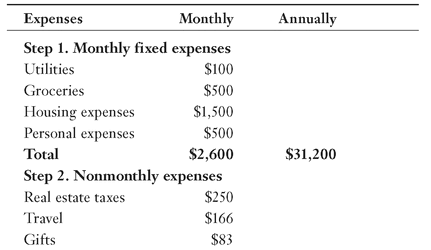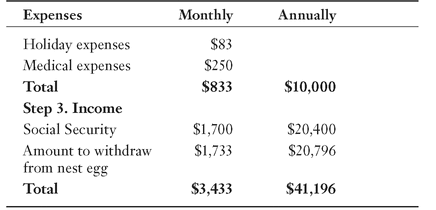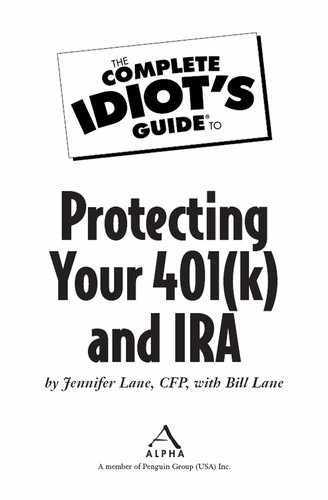Organizing Your Accounts
In a way, you really can get away with less-than-perfect account organization and expense tracking when you’re working because your regular paycheck acts as a sort of cap on your spending. Once you set up your paycheck contribution to your retirement plan at work and your direct deposit to savings or other spending accounts, you may not have had to think much about expenses or even taxes. Cash flow management is tougher in retirement because you need to plan withdrawals from an account that is bigger than your paycheck ever was. The large balance can seem enticing, and expenses can get out of control if you’re not careful. But you can avoid this by setting up a retirement paycheck from your nest egg to your regular checking account. With a little planning, this will also help save taxes.
For Cash Flow
Here’s how to organize your accounts for consistent cash flow:
1. Review your living expenses and decide how much income you need to cover regular monthly expenses like groceries, utilities, and mortgage or rent payments.
2. Calculate what your nonmonthly expenses will probably be. These expenses are things like quarterly real estate taxes, estimated tax payments, travel, holiday expenses, medical costs, and gifts. Then convert the total into a monthly amount.
3. The total of the monthly income need and the nonmonthly need must be less than you can afford based on your nest egg income and the income you generate from Social Security or your pension, because emergencies and surprising expenses will pop up in retirement just as when you were working. Keep these surprises from hurting your retirement accounts by making sure your planned-for expenses are below your means. This is the same principle as when you tried to live on less than your whole paycheck when you were working.
4. Assign a checking account, or a brokerage account with a checking option, that you’ll use for the regular monthly expenses. You may find it easier to set up one checking account for fixed expenses such as car and insurance payments that can be made by auto-debit and one for the variable expenses like groceries and entertainment that are pay-as-you-go expenses.
The following example shows what the math might look like (notice for clarity, we’ve listed only a few of the possible expense categories):
Cash Flow Example


Note: The total amount that could be withdrawn safely from the nest egg (according to a separate retirement calculation) is $2,500, which leaves $767 per month ($2,500 less $1,733) for savings.
Step 4. Set up an account with checking or online bill pay to receive the $1,700 from Social Security and $1,733 from investments each month.
Online money market accounts are a great way to organize these spending accounts. You can nickname them, as in our vacation example, so they’re easy to track, and they earn enough interest to make sure you’re not giving up too much growth on your savings by withdrawing it from your nest egg into an account that pays too little interest like a no- or very low-interest passbook or checking account.
To Save Taxes
Pay as few taxes as possible by reorganizing your accounts to be as tax-efficient as you can and then by making withdrawals from the accounts that are already generating taxable income.
Consolidate your work plans and IRA accounts into as few accounts as you can. A brokerage account will give you the most investment options. Then spread your asset allocation across both your retirement accounts and your taxable accounts so that more of the stocks are in the taxable accounts and more of the fixed income and cash are in the sheltered retirement accounts. Don’t overdo it and leave yourself completely without cash in your taxable accounts, though; just as when you were working, it’s wise to have three to six months of expenses set aside in a liquid account for emergencies.
The investments in your taxable brokerage account will naturally be creating some taxable income through dividends and/or interest whether you decide to make withdrawals from the account or not. You’ll also generate capital gains from the mutual funds in the account from annual fund distributions or from selling investments to rebalance and keep your asset allocation on track. Because you’re going to owe taxes on this money whether you use it as income or not, it’s best to use this income in order to minimize the amount you have to withdraw from your retirement accounts to make ends meet.

Nest Eggs
Use a fully liquid passbook or savings account for the money you want to have quick access to. If you’re holding a high balance, make sure you have FDIC coverage and are getting a good interest rate on the account. Stocks and stock mutual funds or ETFs are liquid, but you don’t want to have to sell in a down market to deal with an unexpected expense.
At the start of each year, estimate what your taxable income from investments will be. Using your broker’s cash management feature, set up an automatic withdrawal from your account so that you get a month’s worth of this income paid directly into your checking account. Then set up a withdrawal from your retirement accounts so that the sum of your taxable withdrawal, plus Social Security, plus the retirement withdrawals, covers your monthly costs. In some cases, if the values in your accounts are not balanced between taxable and retirement, you may need to adjust which accounts you tap in order to manage taxes. Don’t set up withdrawals that will deplete your taxable money faster than your retirement money or vice versa. It’s important to keep the two as balanced as you can through retirement.
..................Content has been hidden....................
You can't read the all page of ebook, please click here login for view all page.
